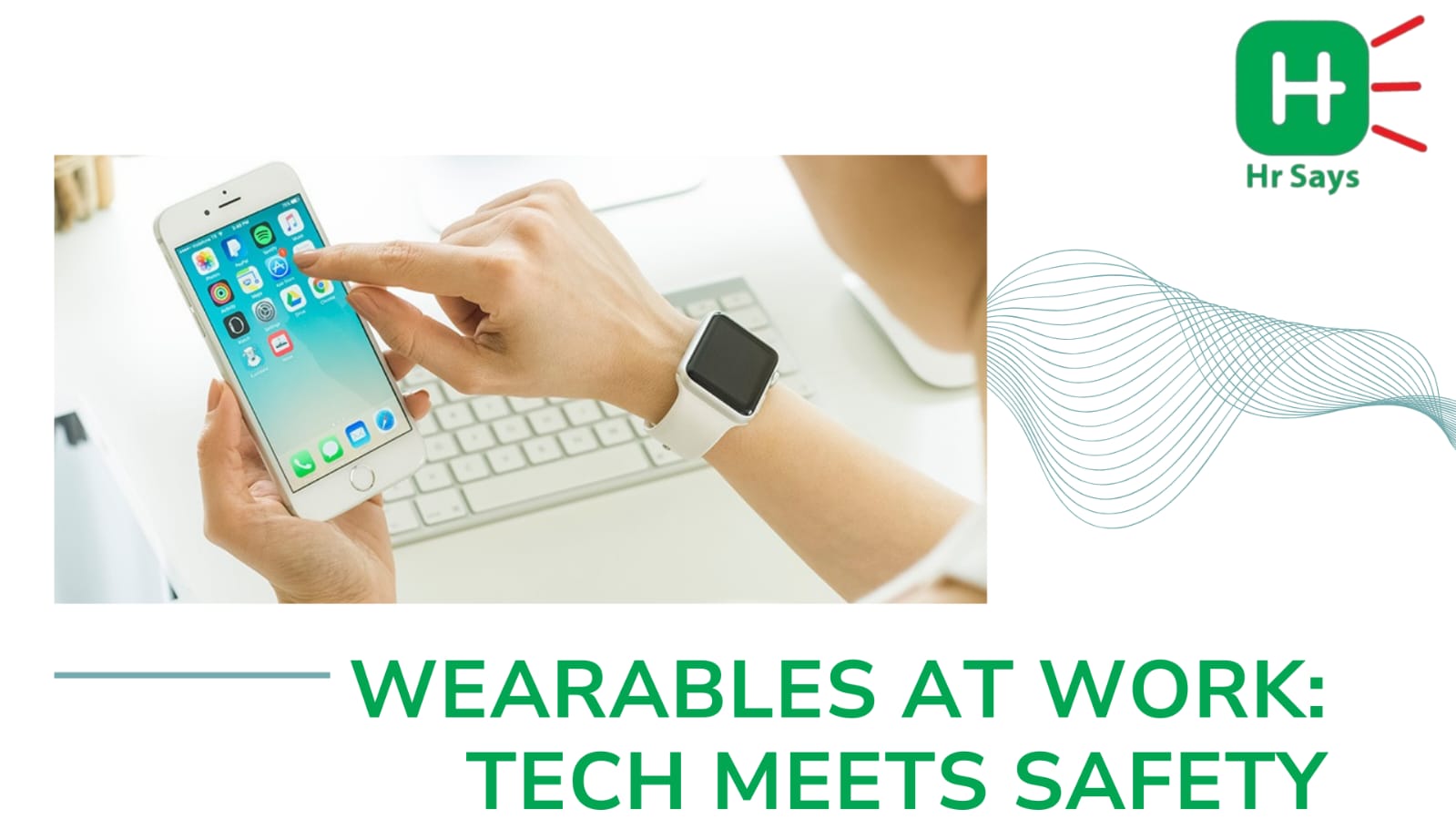Ramesh, a construction worker in Mumbai, was balancing on a scaffold 20 floors up when his smartwatch buzzed wildly. The screen flashed: Heart rate spiking! Take a break. He ignored it. Minutes later, the watch vibrated again: High stress detected. Alert supervisor. Reluctantly, he climbed down. That afternoon, the scaffold collapsed. Ramesh’s story is not fiction, it is the new reality of India’s workplaces, where wearables like smartwatches, safety vests and even chappals are saving lives. But can tech truly bridge the gap between corporate safety policies and ground realities ? Let us dig deeper.
India’s safety revolution:
Gone are the days when safety meant a dusty first aid kit and a faded poster. Today’s wearables include:
Smart helmets: Used by Reliance refinery workers in Jamnagar, these detect gas leaks and send SOS alerts via vibration.
GPS enabled boots: L&T construction sites in Chennai track workers in real time. If someone enters a danger zone, the boots beep and supervisors get notified.
Vital monitors: Tata Steel’s Jharkhand miners wear chest straps that track heart rate, body temperature and fatigue. If readings spike, they are automatically rotated to less strenuous tasks.
Earlier, we knew about heatstroke only after someone collapsed, says a Surat site manager. Now, the watch warns us 30 minutes in advance.
Human resistance:
Privacy fears: A Delhi factory worker refused a smart badge, fearing it would record bathroom breaks. Seth ji will deduct pay for extra chai time, he argued.
Comfort issues: Nagpur warehouse staff complained that vibration heavy belts caused nausea.
Literacy gaps: Many migrant laborers in Gujarat could not understand English alerts.
Solutions:
Vernacular voice alerts (Hindi, Tamil, Telugu).
Safety scores that reward workers with bonuses for consistent safe behavior. Involving unions in tech trials.
Invisible workforce:
When your safety device costs less than a pani puri plate. While corporates adopt fancy gear, India’s 400 million informal workers; street vendors, farmhands, domestic helpers remain underserved. Startups:
Smart gamchas: Jaipur based safetech sells ₹500 turbans with UV sensors. They turn red when sun exposure exceeds safe limits.
Fertility trackers: Female sugarcane cutters in Maharashtra wear ₹300 wristbands that predict ovulation cycles, reducing field work during high risk days.
Noise monitoring earrings: Used by Kolkata traffic police, these alert when decibel levels damage hearing.
My gamcha saved me from heatstroke last summer, says a Rajasthan farmhand. Now, the whole village wants one.
Dark side:
Surveillance over safety: A Bengaluru IT company faced backlash after using wearables to track productivity. Employees received warnings for excessive desk breaks.
False alarms: A Coimbatore factory shut down twice because a worker’s spicy lunch spiked his body temperature, triggering fire alerts.
Cost over care: Many small units buy cheap Chinese wearables that malfunction. A Pune worker’s safety ring failed to detect chemical exposure, leading to severe burns.
Fixing flaws:
Strict GDPR like data laws for workplace wearables (in draft under India’s Digital Personal Data Protection Act).
Mandatory local language manuals.
Govt approved quality certifications.
Gender gap:
Why one size does not fit all. Most wearables are designed for male dominated sectors like construction. Women challenges:
Ill fitting gear: Safety harnesses do not accommodate sarees or pregnancy.
Menstrual health: A Kochi hospital’s nurses were given stress trackers but no way to log period pain.
Harassment sensors: Ahmedabad’s SheSafe startup created pendants that trigger alarms if ripped off, used by female factory workers.
Finally, a device that understands our risks, says a Chennai garment worker.
Road ahead:
Bharat’s smart chappals: A Gurgaon startup embedded sensors into kolhapuri slippers to alert farmers about snake movements in fields.
ASHA’s tech sari: ASHA workers in Bihar wear saris with conductive thread that tracks maternal vitals during home visits. Data syncs to PHCs via Bluetooth.
Ayurvedic wearables: Bengaluru’s NadiX combines pulse reading wristbands with AI to predict health risks based on Ayurvedic principles.
We are building tech that respects Indian realities, says NadiX’s founder. Not just copying the West.
Bigger picture:
A ₹10,000 smartwatch cannot fix negligent supervisors or broken fire exits. As Infosy's safety head notes: Tech is a tool, not a culture.
Successful companies blend wearables with:
Monthly chai pe charcha sessions where workers critique safety measures.
Kids drawing contests: Draw Maa’s safest workplace.
Regional festivals: During Pongal, a Coimbatore plant awards safety Kolams.
Final siren:
Ramesh, the Mumbai construction worker, still wears his smartwatch, but with a tweak. His supervisor added a custom alert: Bhai, neeche utar! (Bro, climb down!) in Marathi.
That is the sweet spot: Technology that speaks the language of its users, literally and emotionally. For India’s workforce, wearables are not about replacing human judgment, they are about amplifying it.
So, the next time your watch buzzes with a health alert, remember: Behind that circuit board are countless lives stitched into its code, including yours.
This is not just about gadgets, it is about reimagining safety in a country where a street vendor’s survival matters as much as a CEO’s. After all, every worker deserves to return home unharmed, whether they are building metros or momos.

 This is not just about gadgets, it is about reimagining safety in a country where a street vendor’s survival matters as much as a CEO’s.
This is not just about gadgets, it is about reimagining safety in a country where a street vendor’s survival matters as much as a CEO’s.












.jpeg)
.jpeg)

.jpeg)

.jpeg)


.jpeg)

.jpeg)

.jpeg)


